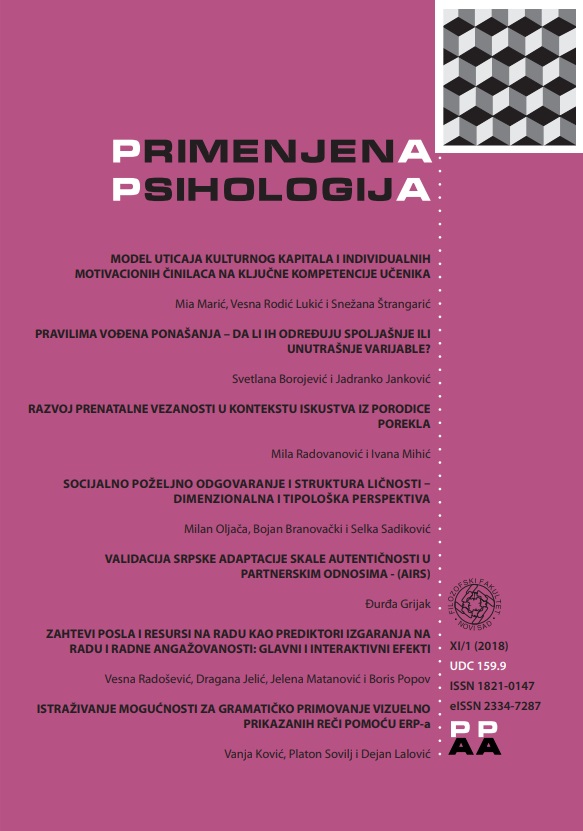ZAHTEVI POSLA I RESURSI NA RADU KAO PREDIKTORI IZGARANJA NA RADU I RADNE ANGAŽOVANOSTI: GLAVNI I INTERAKTIVNI EFEKTI
JOB DEMANDS AND RESOURCES AS PREDICTORS OF BURNOUT AND WORK ENGAGEMENT: MAIN AND INTERACTION EFFECTS
Author(s): Vesna Radošević, Dragana Jelić, Jelena Matanović, Boris PopovSubject(s): Psychology, Organizational Psychology
Published by: Филозофски факултет, Универзитет у Новом Саду
Keywords: job demands; job resources; work burnout; work engagement; Job demands-resources model
Summary/Abstract: The hypothetical model of the study was based on three similar theoretical models: Job demands-control, Job demands-control-support, and Job demands-resources, and it categorizes all jobs into four types: “active”, “high strain”, “low strain”, and “passive” job type. The main purpose of the current study was to determine whether there are significant main and interaction effects of job demands and job resources in predicting burnout and work engagement. The proposed hypotheses were tested with a cross-sectional design among 206 Serbian employes (63% women). Respondents completed Work characteristics questionnaire, Utrecht work engagement scale, and Work burnout scale. Results of ANOVA supported hypotheses regarding the main effect of job demands on burnout, as well as the main effect of job resources on both burnout and work engagement. All main effects were in the expected direction. However, contrary to the proposed hypotheses, none of the interaction effect was found significant. In terms of proposed hypothetical model, it has been shown that employees on the “active” and “low strain” jobs exhibited more work engagement comparing to those on “passive” and “high strain” jobs. Also, employees with the “low strain” job type scored lower on burnout comparing to those with other three types. Research findings were discussed in the context of proposed theoretical models. Finally, practical implications of the study were summarized, as well as future directions.
Journal: Primenjena psihologija
- Issue Year: 11/2018
- Issue No: 1
- Page Range: 105-125
- Page Count: 21
- Language: Serbian

